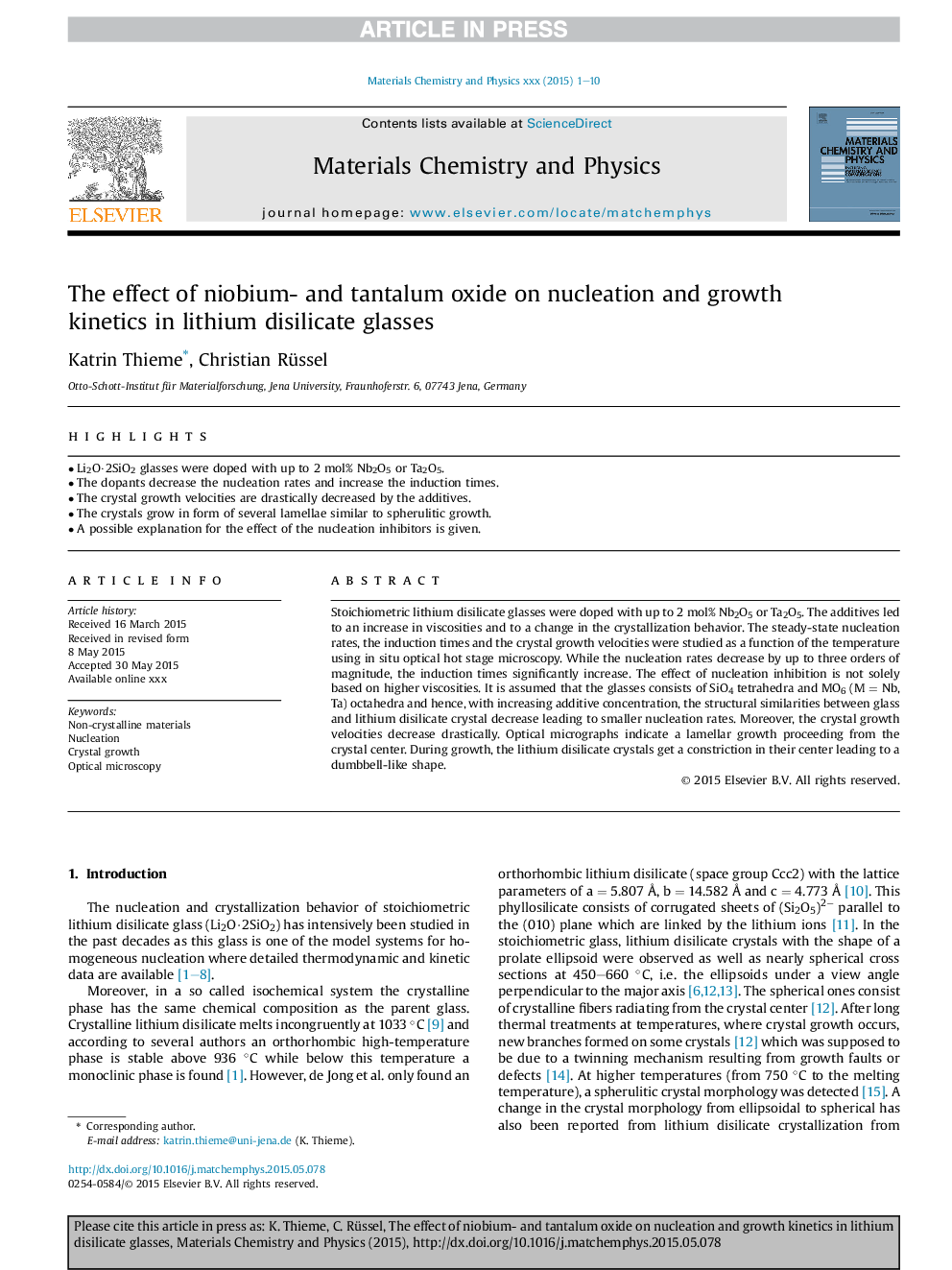| Article ID | Journal | Published Year | Pages | File Type |
|---|---|---|---|---|
| 7922907 | Materials Chemistry and Physics | 2015 | 10 Pages |
Abstract
Stoichiometric lithium disilicate glasses were doped with up to 2Â mol% Nb2O5 or Ta2O5. The additives led to an increase in viscosities and to a change in the crystallization behavior. The steady-state nucleation rates, the induction times and the crystal growth velocities were studied as a function of the temperature using in situ optical hot stage microscopy. While the nucleation rates decrease by up to three orders of magnitude, the induction times significantly increase. The effect of nucleation inhibition is not solely based on higher viscosities. It is assumed that the glasses consists of SiO4 tetrahedra and MO6 (MÂ =Â Nb, Ta) octahedra and hence, with increasing additive concentration, the structural similarities between glass and lithium disilicate crystal decrease leading to smaller nucleation rates. Moreover, the crystal growth velocities decrease drastically. Optical micrographs indicate a lamellar growth proceeding from the crystal center. During growth, the lithium disilicate crystals get a constriction in their center leading to a dumbbell-like shape.
Related Topics
Physical Sciences and Engineering
Materials Science
Electronic, Optical and Magnetic Materials
Authors
Katrin Thieme, Christian Rüssel,
